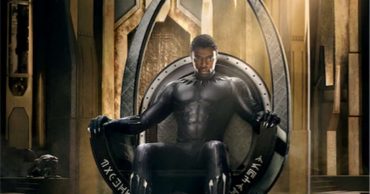
Denis Villeneuve’s Dune: A Faithful Adaptation with Some Omissions
Denis Villeneuve’s adaptation of Frank Herbert’s classic sci-fi novel Dune has been a critical and commercial success. A sequel, which will cover the second half of the novel, has already been given the green light. A sizable part of the movie’s success comes from how faithful it is to the source material. However, the constraints of cinema versus the written word did mean that some of the rich detail packed into Herbert’s surprisingly short novel did not make it onto the screen.
The Corrinos and Emperor Shaddam: Missing Pieces of the Puzzle
The Corrinos and Emperor Shaddam are one of the things that didn’t make the cut in Villeneuve’s Dune. References are made to them, and we are told that the Emperor is concerned with how popular Duke Leto Atreides has become and the possibility that he might make a play for the throne. We see the prison planet on which the empire’s elite troops, the Sardaukar, are trained when the Harkonnen forces are bolstered by the inclusion of these fearsome warriors. This is enough to get the general gist of the plot, though appearances from Shaddam and his court are missed. Which is a pity, for Shaddam is not the one-note villain he might seem and actually quite likes Leto, and his court includes important characters like Princess Irulan and Count Fenring, the latter of which is as much a result of the Bene Gesserit breeding program as our protagonist Paul.
The Bene Gesserit Breeding Program and the Butlerian Jihad
That breeding program and the reasoning behind it is another thing that isn’t fleshed out as much as it was in the book. That Paul and the Bene Gesserit have super-human abilities is established well, with scenes such as the Gom Jabbar test being adapted in full. But there is more of an explanation as to why humanity came to such a point.
First-time viewers might have noticed that the technology in Dune is an odd combination of advanced yet archaic. That they use melee weapons in favor of projectiles is explained in detail by the personal shields deflecting anything that comes towards a wearer too fast. What isn’t as well explained is the lack of computerized technology. You would think a society that far in the future would have advanced AI and such, but Dune very much does not. Herbert addressed this in the books. You see, far in the past there were such things. Robots, artificial intelligences, and other technologies. But they proved too powerful and rebellious, resulting in a galactic war known as the Butlerian Jihad. This was a time period in which a fellow named Butler did his best John Connor impression and led humanity in a war against the machines. The point is that AI and anything resembling it is strictly outlawed in the Dune setting.
Mentats: The Human Replacements for Computers
This is why the technology is not as smooth or complex as might be seen in a setting like Star Trek. And it is also part of the reason that groups like the Bene Gesserit have resorted to genetic engineering. In order to replace computers and the other advanced machines that are no longer allowed, humanity has taken steps to change themselves into something that can replace those things. Part of that is the creation of a group called the mentats. We meet Duke Leto’s mentat, Thufir Hawat, but the movie fails to offer an explanation for who he is and what he does. All we see is a brief scene of his eyes rolling back in his head while he swiftly does some sums for the Duke. There is more that should have been said and seen of him, for not only is Thufir an interesting character whose fate was worth showing, but the mentats themselves are important to the setting. They are essentially the biological replacements for computers, humans who have been conditioned through training, drugs, and genetic alteration to give them perfect recall and fast mental processing. The movie did not explain this, or mention that Paul himself has been given mentat training in addition to his training with his mother Jessica and the Atreides war masters.
The Spacing Guild: A Powerful Force Left Unexplored
Another, even bigger omission, is the Spacing Guild itself. This is the organization whose mutated, spice-addicted Engineers have a complete monopoly on space travel. Their prescient abilities allow them to navigate through space without the need of a computer. Naturally, having a monopoly on space travel in an intergalactic empire has made the Spacing Guild massively wealthy and powerful, so much so that they think nothing of making demands of the Emperor himself. That the spice they need is found only on Arrakis, aka Dune, is why the planet is fought over so fiercely. This wasn’t given the emphasis in the movie that it was in the books, unfortunately, perhaps leaving viewers confused as to why a mostly barren planet is so desired.
Baron Harkonnen: An Even Darker Villain in the Books
In addition, while you might have thought Stellan Skarsgard’s Baron Harkonnen a disturbing villain–understandably!–you might be surprised to learn that the book version is even worse. He is, after all, an open pedophile, who laments not being able to turn Paul Atreides into his sex slave. Even with these omissions, Dune is still a great movie. But even a great movie can rarely measure up to a great book, so if you liked what you saw and find yourself wanting more you should absolutely read the books. They are packed with even more richly cool sci-fi than you’ve already seen.
 Follow Us
Follow Us





